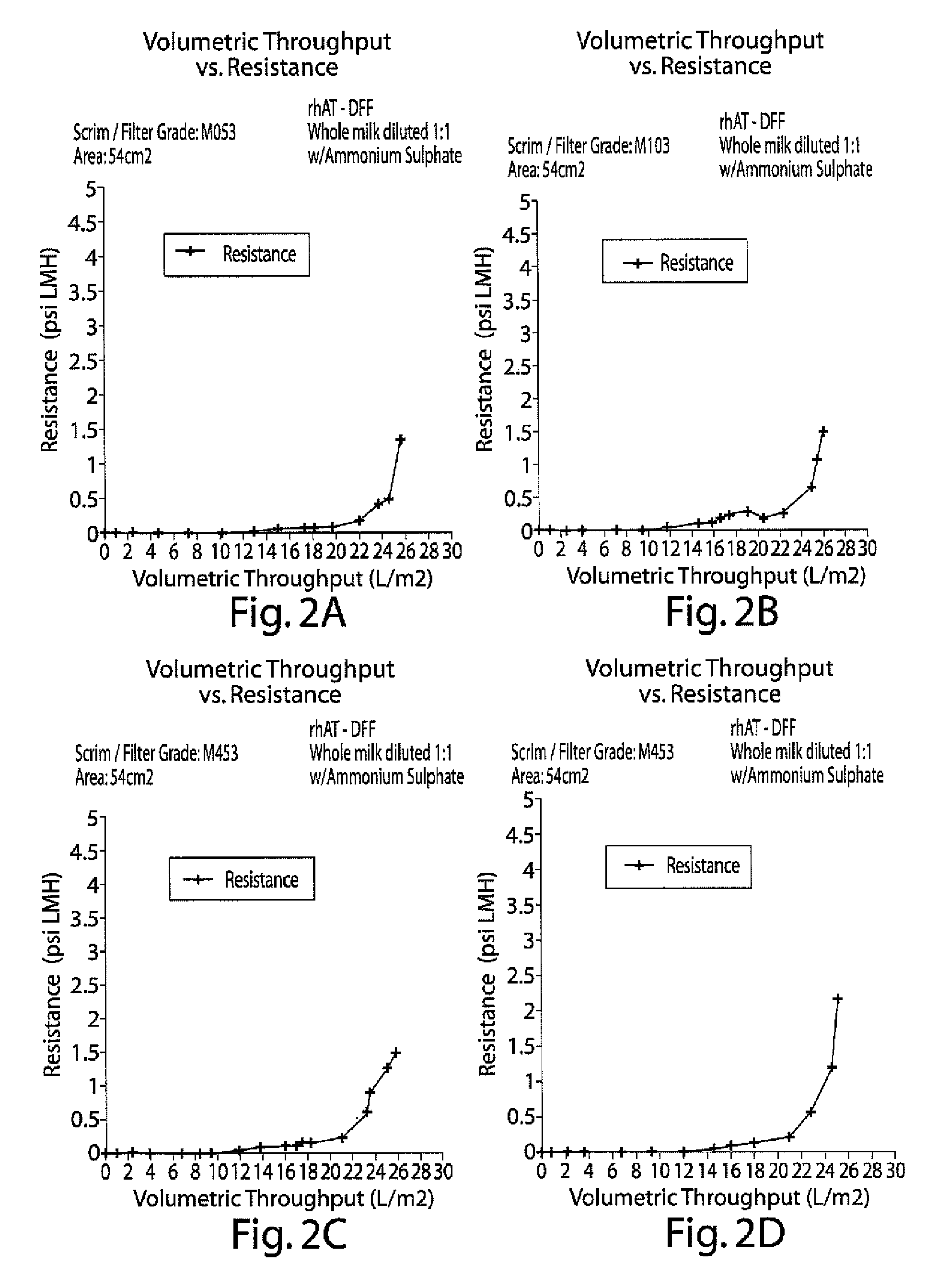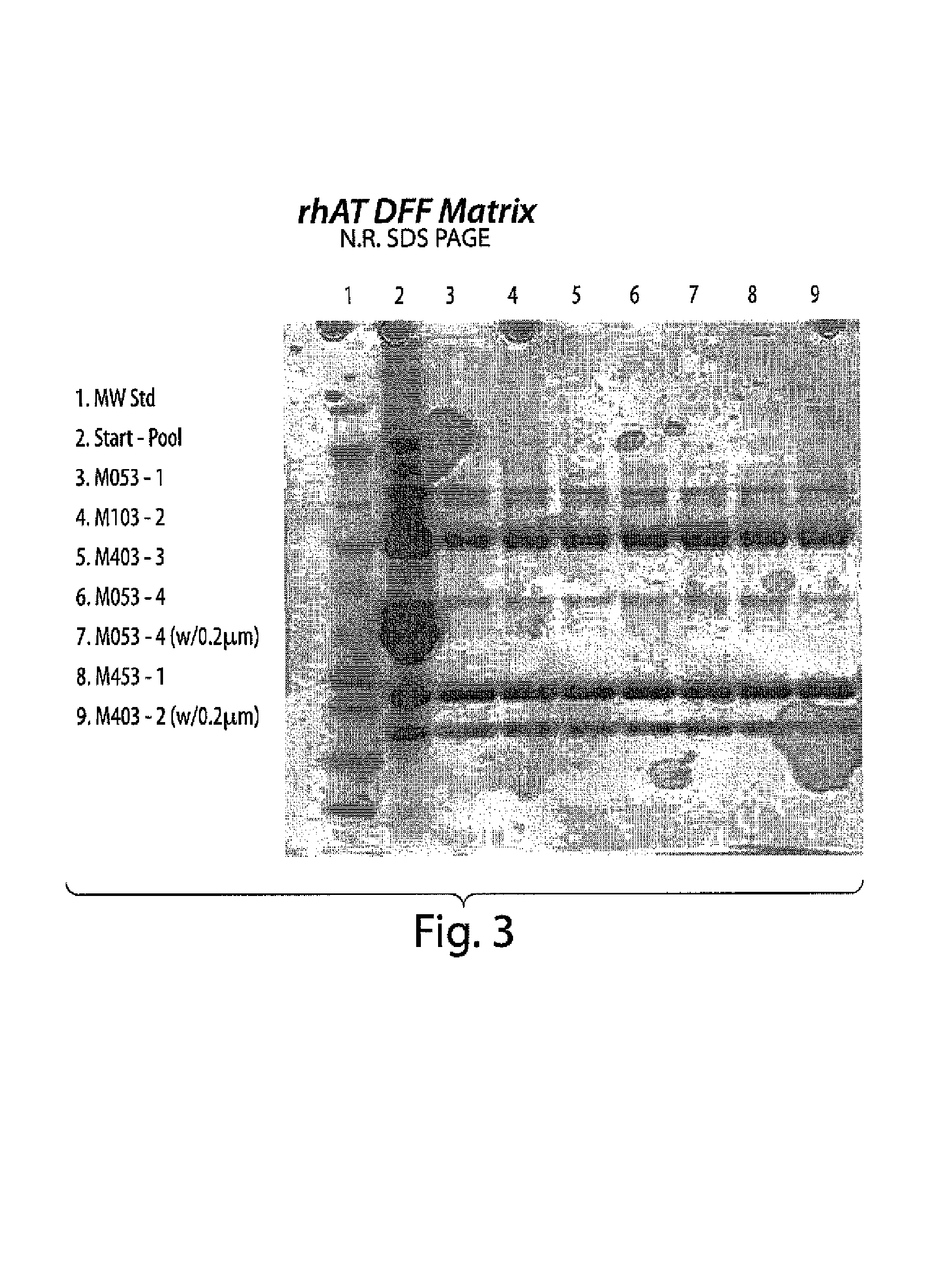Clarification of transgenic milk using depth filtration
a technology of transgenic milk and depth filtration, which is applied in the direction of peptide/protein ingredients, immunoglobulins, peptides, etc., can solve the problems of less or aberrant biological activity, complex problems, and imposed product requirements, so as to improve the separation efficiency of proteins, enhance the effect of such filtering activity, and enhance the clarification and fractionation of proteins
- Summary
- Abstract
- Description
- Claims
- Application Information
AI Technical Summary
Benefits of technology
Problems solved by technology
Method used
Image
Examples
Embodiment Construction
[0038]The following abbreviations have designated meanings in the specification:
[0039]
Abbreviation Key:BSABovine Serum AlbuminCHOChinese Hamster Ovary cellsCVCrossflow VelocityDFDepth FiltrationDVDiafiltration VolumeIEFIsoelectric FocusingGMHMass Flux (grams / m2 / hour) - also JMLMHLiquid Flux (liters / m2 / hour) - also JLLPMLiters Per MinuteMMolarMFMicrofiltrationNMWCONominal Molecular Weight Cut OffNWPNormalized Water PermeabilityPESPoly(ether)-sulfonepHA term used to describe the hydrogen-ion activity of achemical or compound according to well-known scientificparameters.PPMParts Per MillionSDS-PAGESDS (sodium dodecyl sulfate) Poly-Acrylamide GelelectrophoresisSECSize Exclusion ChromatographyTFFTangential Flow FiltrationPEGPolyethylene glycolTMPTransmembrane PressureUFUltrafiltration
Explanation of Terms
Clarification[0040]The removal of particulate matter from a solution so that the solution is able to pass through a 0.2 μm membrane.
Colloids[0041]Refers to large molecules that do not pas...
PUM
| Property | Measurement | Unit |
|---|---|---|
| molecular weight | aaaaa | aaaaa |
| molecular weight | aaaaa | aaaaa |
| temperature | aaaaa | aaaaa |
Abstract
Description
Claims
Application Information
 Login to View More
Login to View More - R&D
- Intellectual Property
- Life Sciences
- Materials
- Tech Scout
- Unparalleled Data Quality
- Higher Quality Content
- 60% Fewer Hallucinations
Browse by: Latest US Patents, China's latest patents, Technical Efficacy Thesaurus, Application Domain, Technology Topic, Popular Technical Reports.
© 2025 PatSnap. All rights reserved.Legal|Privacy policy|Modern Slavery Act Transparency Statement|Sitemap|About US| Contact US: help@patsnap.com



